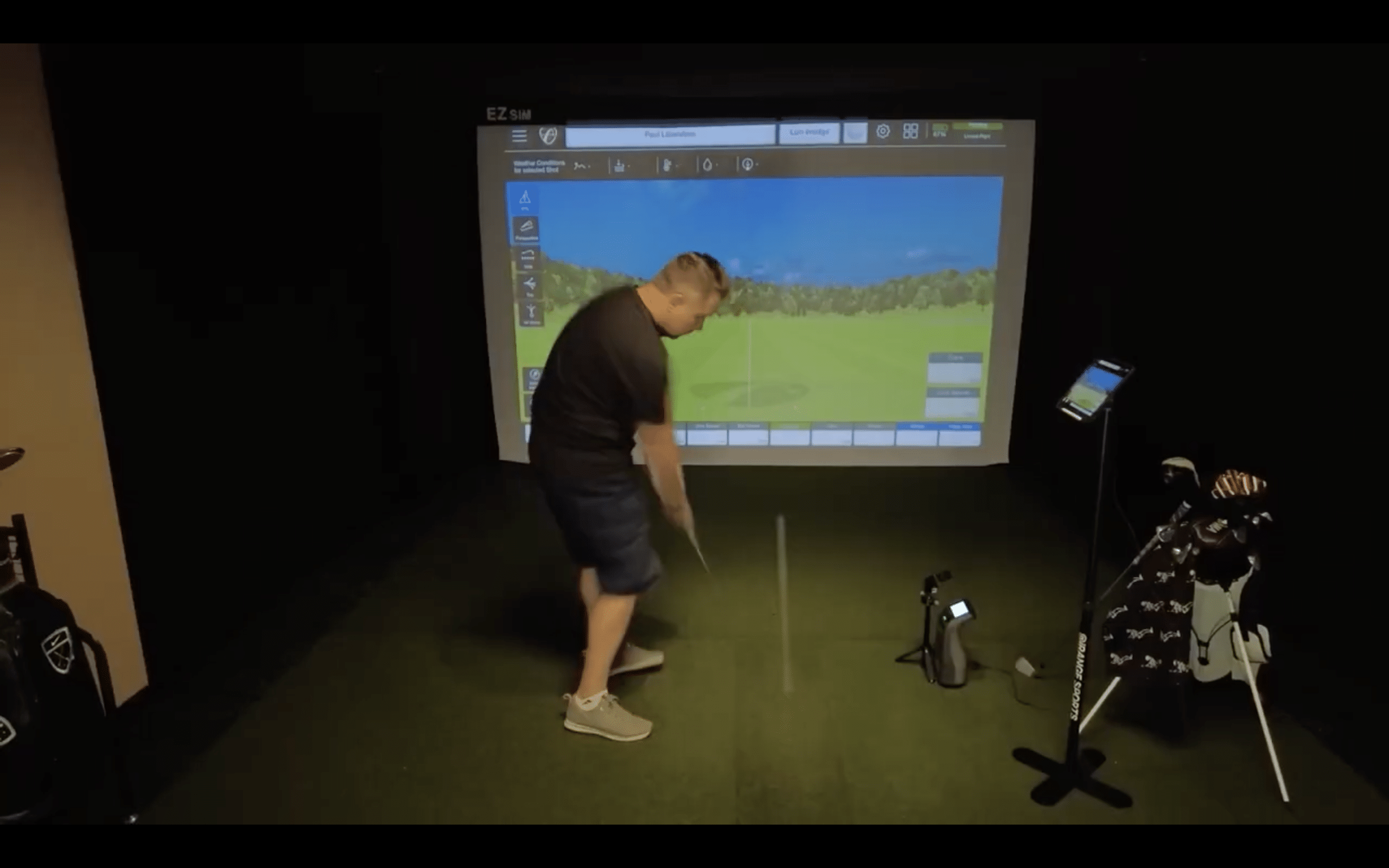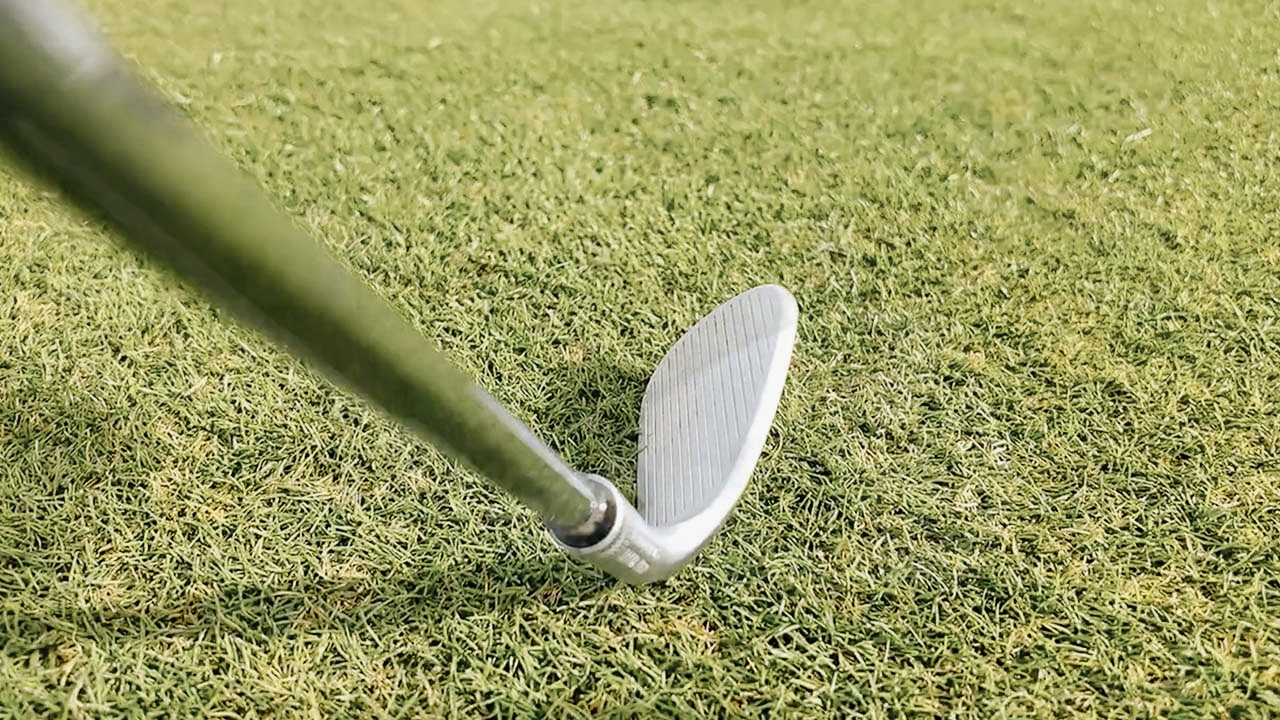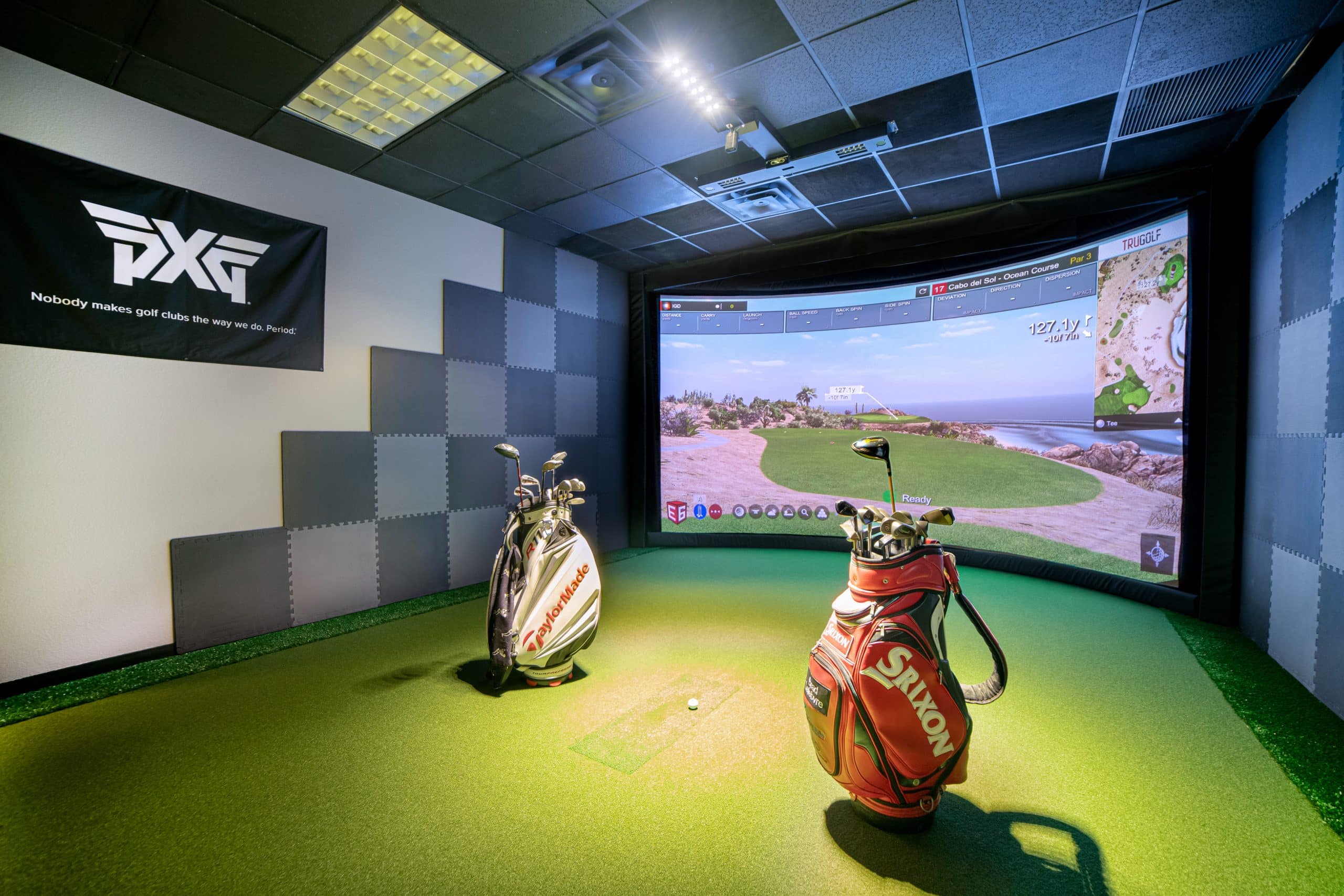You'll enhance your simulator session by bringing just 4-5 strategic clubs: a driver, 7-iron, wedge, hybrid, and putter. This focused selection covers 80% of your practice needs while preventing decision fatigue that kills productivity. Choose forgiving irons like Titleist T350s for better feedback, and opt for putters with matte finishes to avoid sensor tracking issues. Skip the full bag—fewer clubs means better focus on swing mechanics and more meaningful practice time for each shot type.
When you're setting up for simulator practice, choosing the right clubs makes all the difference between a productive session and swinging wildly in your garage. You'll want to bring a strategic mix that covers all your fundamental shots without overcrowding your space.
Start with these core clubs: a driver for those satisfying long drives, a 7-iron for reliable approach shots, and a wedge for short game work. The key point is—these three alone will give you about 80% of what you need for solid practice. Add a hybrid for versatility and a putter if your simulator setup includes putting mats. Forgiving irons are often preferred to accommodate simulator conditions and improve confidence.
Your practice goals should drive your selection. Focusing on swing mechanics? Stick with fewer clubs to avoid decision fatigue and really dial in your technique. A launch monitor tracks essential data like ball speed, launch angle, and spin rate to help optimize your club performance. Quality hitting mats can withstand thousands of swings, so you can practice extensively with your selected clubs without worrying about equipment damage.

Now that you've got your core club selection down, let's talk about the clubs that'll make or break your simulator data accuracy—your irons and wedges. For irons, the Titleist T350s shine for players with 13+ handicaps, providing forgiveness that keeps your data clean even on mishits. The Mizuno Pro 245s offer explosive distance and superb feel, though their mid-irons can launch low. The important point is—forgiveness is everything for reliable tracking data.
For wedges, the Titleist Vokey SM10 dominates 2024 accuracy tests with the highest strokes gained metric. Yes, they're pricey at $189 each, but the spin control and shot versatility are unmatched. The TaylorMade Milled Grind 4 ranks second for precision. Remember, high-MOI designs reduce twisting on off-center hits, giving you consistently accurate simulator feedback. Quality simulators track spin rate data that helps golfers understand shot control performance on both approach shots and drives. Even premium systems like the Foresight Sports GC Quad can experience missed shots when testing wedge performance, so clean contact remains crucial for reliable data collection. Camera-based launch monitors like SkyTrak capture high-speed images of the ball immediately after impact to ensure the most precise measurement of your wedge shots.
While your irons might give you the most consistent simulator data, your driver and fairway woods present unique challenges that'll either make your virtual rounds feel authentic or leave you scratching your head at wonky yardages.
Here's the thing: simulators like SkyTrak often struggle with woods and drivers without proper calibration. Your 3-wood actually becomes your best friend indoors – it's more forgiving than long irons and easier to swing in tight spaces like a 9.8-foot garage bay. Modern simulators provide instant detailed feedback on your swing mechanics, helping you understand exactly why certain shots produce inconsistent results.
The Callaway 2025 Elyte series tackles these issues head-on. Their Ai 10X Face Technology maintains ball speed even on off-center hits, while the 35g suspended tungsten weight creates consistent launch conditions. Premium models feature sensor-compatible designs that improve tracking accuracy, making manual configuration tweaks less necessary for reliable distance data. The step sole design reduces contact area by 57% for easier launches, which translates to more predictable simulator readings. TaylorMade's M6 three-wood with speed pocket technology delivers consistent yardages and spin rates around 3300 RPM for reliable indoor performance.

If you're debating whether hybrids deserve a spot in your simulator setup, the answer depends on your specific distance gaps and practice goals. The reality is: hybrids excel at filling that awkward yardage between your longest iron and shortest fairway wood. If you've got a 30-yard gap between your 5-iron and 3-wood, a hybrid solves that problem instantly.
You'll want hybrids in your simulator bag when practicing long par 3 approaches or recovery shots from rough. Their forgiving design minimizes those frustrating mishits that happen on launch monitors, while their larger clubheads promote consistent ball launch from different lies. Plus, hybrids make it easier to practice high-trajectory shots that land softly—perfect for dialing in those target green approaches during your indoor sessions. Advanced simulators use high-precision sensors to capture club impact position and angle data, providing detailed feedback on your hybrid performance.
Modern hybrids help golfers achieve flush contact from various lies, including thick grass conditions that you might simulate during practice sessions. These versatile clubs offer benefits for golfers of all skill levels, as top professionals and amateurs alike rely on their performance advantages.
The right putter can make or break your simulator putting practice, and the fact of the matter is—not every putter plays nice with indoor technology. The important point is: infrared and camera-based systems need to track your putter head clearly, which means metal clubs with shiny finishes can cause sensor glare and throw off readings completely.
You'll want a putter with a matte finish or non-metal inserts to avoid these headaches. Mallet-style putters work best because they offer better balance and stability on artificial surfaces—remember, you're missing that natural turf feedback indoors. Weighted putters also help maintain stroke consistency when practicing on simulator mats.
Some systems even come with Bluetooth-enabled putters that provide real-time stroke analysis! Advanced putting systems can change slope and undulation to recreate challenging putts from famous courses. The quality of your hitting mat can significantly impact how your putter performs during indoor practice sessions. If you're looking to take your practice to the next level, consider pairing your simulator with a quality putting mat that provides true roll surface for the most realistic indoor experience.

Now that you've got your putter sorted out, your other clubs need just as much attention—and here's where things get really interesting. Titanium and composite club heads work best because they're lighter yet strong, helping simulators detect your swing speed more accurately. Matte finishes beat shiny ones every time—they reduce glare that can mess with optical sensors.
Here's the thing about shafts: shorter ones give you better space efficiency indoors, while lightweight graphite increases swing speed for better tracking. Adjustable loft clubs are revolutionary since they let you calibrate precisely for accurate launch angles.
Your grips matter too! Matte textures won't interfere with launch monitors, and consistent grip sizes improve your swing repeatability—which means more reliable data every single time. Modern launch monitors use radar-based and camera-based technology to capture essential metrics like ball speed and launch angle with exceptional precision.
Why do so many golfers nail their swing mechanics in the simulator but still struggle with club selection? You're probably making one of these classic mistakes that'll hurt your game.
First, you're overestimating your distances. That 7-iron you think carries 150 yards? It's probably closer to 135. Track your actual data instead of guessing – simulators don't lie about carry distances!
Second, you're ignoring environmental settings. Wind speed and elevation changes matter, even virtually. Always check the simulator's course conditions before swinging.
Finally, you're neglecting your short game. The reality is: wedges and putters account for 60% of your shots, yet most golfers spend 80% of simulator time with drivers and irons. Focus on scoring clubs, not just distance makers!
When investing in your own setup, remember that launch monitors can range from $500 for budget models to over $25,000 for professional-grade units that provide the most accurate club and ball data.
Yes, you can use rental clubs at most golf simulators for a small fee. However, they're typically generic sets that won't match your height, swing style, or preferences. You'll miss out on practicing with familiar equipment, which affects your training quality. Rental clubs require proper handling since you're responsible for any damage. For the best simulator experience and meaningful practice data, bringing your own clubs is recommended.
You should clean your clubs every 1-2 rounds if you're serious about performance, but at minimum once every 4 rounds or monthly for casual play. The reality is—dirty grooves kill your spin and control in simulators, making your practice sessions less effective. Clean clubs before each simulator visit if they've been sitting around, since hardened grime acts like cement in your grooves!
Yes, you'll need specific considerations! You must use left-handed clubs for accurate tracking and ball flight data. The simulator needs calibration for your swing direction, and you'll want to verify the software includes your specific leftie club models. Room setup matters too—you'll need proper positioning so you don't hit walls during your backswing. Most modern simulators accommodate left-handed players perfectly with correct setup.
Yes, you should definitely bring backup clubs! Simulators like E6 Connect often misread clubs, defaulting to a 1 wood or 6 iron regardless of what you're actually swinging. Sensor malfunctions and software limitations can make certain clubs invisible to the system. Having alternatives lets you switch when the simulator can't identify your primary clubs, keeping your session flowing smoothly without frustrating interruptions.
Most golf retailers offer simulator testing before you buy. You'll get precise data like ball speed and launch angle that outdoor ranges can't provide. Testing lets you compare multiple club models side-by-side and guarantees the clubs match your swing. Just keep in mind that simulator surfaces differ slightly from real courses, so complement your indoor testing with on-course trials when possible.
You don't need to overthink your simulator club selection. Start with your trusty 7-iron, driver, and sand wedge—these three clubs'll give you solid feedback on most shots. Add your pitching wedge and putter, and you've got everything needed for a productive session! Remember, simulators work best with clean clubfaces and proper swing tempo. Focus on quality practice over quantity, and you'll see real improvement in your game.